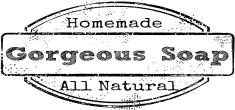 In this day and age, our chances of living a chemical-free life are very slim. Everywhere we look, we see products that are enhanced with dangerous ingredients we barely know anything about. From the food we eat to the products we use, everything seems a little too unsafe.
In this day and age, our chances of living a chemical-free life are very slim. Everywhere we look, we see products that are enhanced with dangerous ingredients we barely know anything about. From the food we eat to the products we use, everything seems a little too unsafe.
The idea that we’re willingly subjecting ourselves to such peril is too much to handle. But while a number of organizations are investing time in promoting awareness through various medium, more and more consumers are turning a blind eye to this alarming issue at hand.
Afterall, it happens to everybody and we can all just live with it, right?
No, of course not.
In case you haven’t given this topic much thought in the past, we’re here to convince you to do otherwise. You don’t have to sacrifice so much of your time and even your money--if that’s what you’re worried about--to appreciate the reasons why you need to switch to a purely safe and organic way of life.
Harmful Ingredients in Beauty Products
Let’s start with your beauty and skincare products; probably the first things in your vanity dresser you need to get rid of ASAP.
Sodium lauryl sulfate (SLS) / Sodium laureth sulfate (SLES)
This surfactant is commonly found in shampoo, body wash, mascara, and acne treatments--more than 90% of personal care and cleaning products. It is known to cause eye damage, skin and lung irritation, depression, diarrhea and even death.
However, a more major concern on the use of this harmful chemical is its potential to combine with other chemicals to form a carcinogen called nitrosamines. This is enough of a reason to question and disallow the continuous inclusion of this ingredient in numerous products.
Still, if you take a quick glance at the back of your favorite shampoo, we can bet that you’ll see a number of ingredients which you can hardly read. We can assume that these are the SLS and your shampoo sure has a LOT of them.
Through the use of alternative organic products such as these homemade all-natural shampoo bars, you and even the whole family no longer need to be exposed to the dangers posed by regular SLS use.
Phthalates
This is a group of chemicals known for their ability to increase the flexibility and softness of plastics. These plasticizers are already banned in the production of children’s toys in EU and California but is still adamantly present in numerous fragrances, perfumes, deodorants, lotions.
These chemicals are known to be endocrine disruptors and have been linked to increased risk of breast cancer, early breast development in girls, and reproductive birth defects in males and females.
Parabens
 Parabens are commonly used as preservatives which acts as a defense against the growth of bacteria, mold, and yeast in cosmetic products. They are used in production of makeup, body washes, deodorants, shampoos and facial cleansers.
Parabens are commonly used as preservatives which acts as a defense against the growth of bacteria, mold, and yeast in cosmetic products. They are used in production of makeup, body washes, deodorants, shampoos and facial cleansers.
But aside from such beneficial role, parabens are also known as estrogen mimickers; ingredients that enter the bloodstream when applied to the skin and is mistaken by the body as estrogen. These disrupters then signal the body that there is already an abnormally high amount of estrogen causing it to react accordingly. These negative reactions range from decrease in muscle mass, increase in fat deposits and spur of reproductive difficulties in both men and women.
Fragrance
This ingredient which hides in a very sneaky and scary name actually refers to a company’s “secret formula”. But what exactly are they putting in such concoction? We don’t really know.
As consumers, it is your job to stay away from chemicals that are hazardous to your health, and if such ingredient happens to be a cocktail of chemicals listed under one name then you can start running away to save your life.
According to the Environmental Working Group (EWG) Skin Deep Database, fragrance mixes have been linked with allergies, dermatitis, respiratory distress and potential effects on the reproductive system. It can be found in various products such as conditioner, shampoo, body wash, perfumes, and moisturizers.
This Lavender based soap made from all raw goat milk and real lavender proves that we don’t need to settle with chemically-laden products just to feel and smell good all the time.
Formaldehyde
Alarmingly, Formaldehyde and formaldehyde-releasing preservatives are widely used in numerous cosmetic products to prevent bacterial growth. This known carcinogen has been linked to nasal and nasopharyngeal; both occupational related cancers.
Aside from that, Formaldehyde can also cause allergic reactions and bring about negative effects to one’s immune system.
It can be found in nail polish, body washes, conditioners, shampoos, cleansers, eye shadows, nail polish treatments.
Triclosan
Known as an ingredient in toothpastes, antibacterial soaps and deodorants, Triclosan is an antimicrobial chemical which largely affects the functions of the endocrine.
During 2013, the FDA ruled that manufacturers using the ingredient had to demonstrate that there were no long-term detrimental effects when they agreed that there is no health benefit to humans who use triclosan.
Despite the numerous studies and debates over this harmful ingredient, manufacturers were unable to provide enough reason as to the benefits of such over regular soap.
Furthermore, Triclosan in liquid products and Triclocarban in bar soaps have been linked to hormonal disruptions, bacterial resistance, impaired muscle function, impaired immune function and increased allergies. As a wise consumer, you can opt to use organic antibacterial and antiseptic agents like tea tree oil. You can start with this amazing Oats and Tea Tree Oil organic soap and see how different safe products can make you feel.
As a wise consumer, you can opt to use organic antibacterial and antiseptic agents like tea tree oil. You can start with this amazing Oats and Tea Tree Oil organic soap and see how different safe products can make you feel.
We already admitted that fighting the exposure to every single chemical is a lost cause but while we’re at that, we should also acknowledge the truth that we can still do something about it.
For your part, we expect that you’ll be more intentional in choosing the products to use in your body and in the household as well. Awareness is key but simply knowing what’s the problem and not taking steps to fight it is a whole other thing altogether.
So good luck, and start throwing away those chemically-laden products you no longer need.
